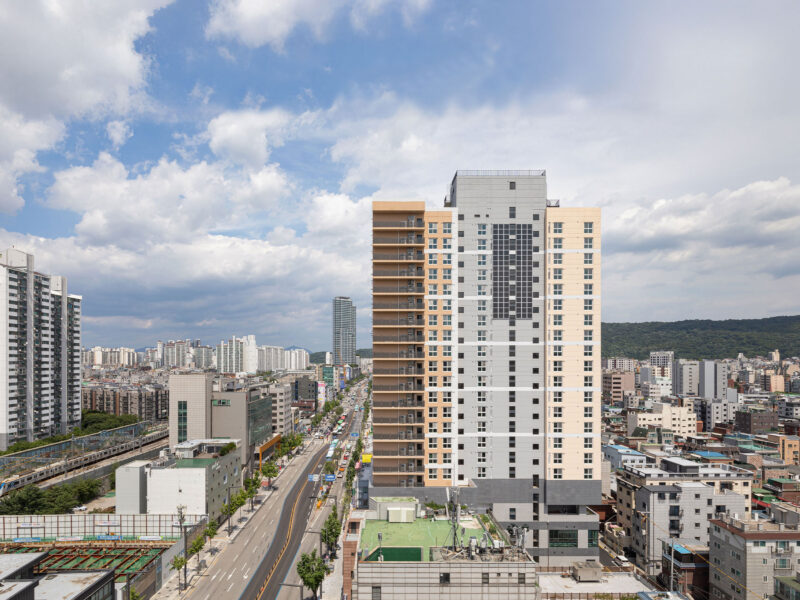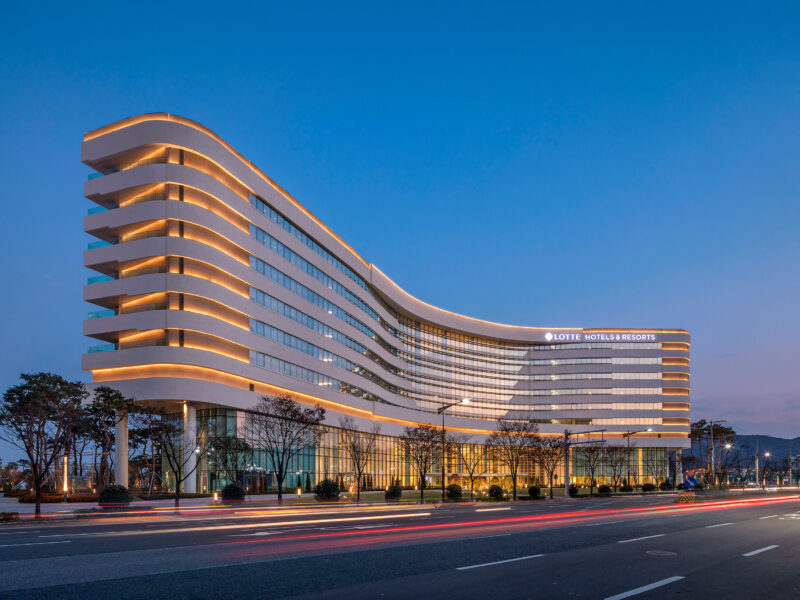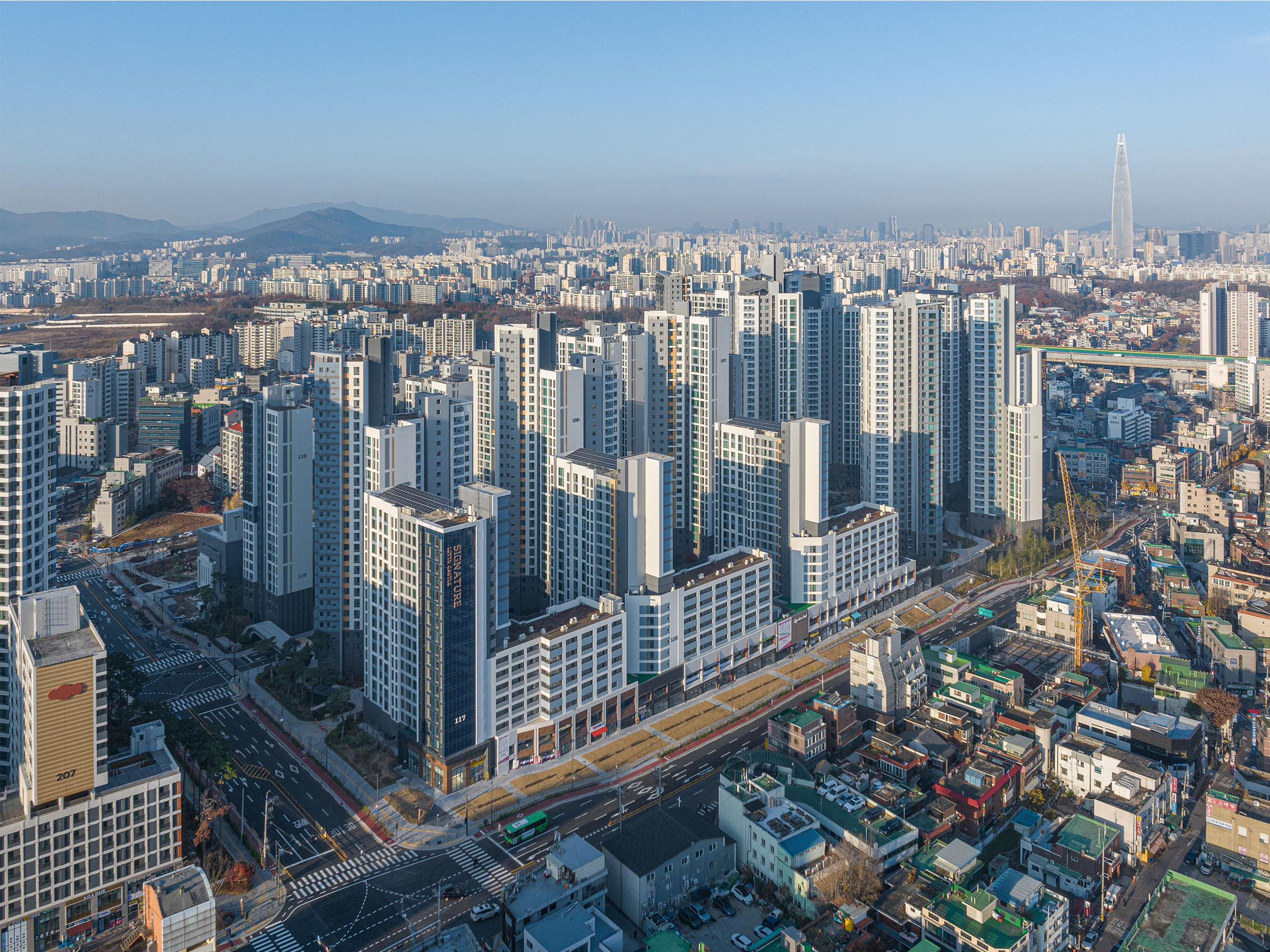
The 1,927-unit Lotte Castle Signature Songpa (Geoye District 2-1 Housing Redevelopment Project) aimed not only to achieve the fundamental goals of housing redevelopment by improving and renovating the aging residential environment and infrastructure, but also to create an eco-friendly, human-centered residential complex. Considering the sloped site’s characteristics, natural terrain alterations were minimized, and residential buildings were arranged to adapt to the slope. The resulting deck spaces were used to plan ancillary facilities, and natural access to the complex was designed to encourage pedestrian-friendly circulation and a walkable neighborhood.
This long-term project was initiated in 2009 and completed in 2022. The key to project success was to balance the gradually increasing expectations and requirements for the residential environment over more than a decade. Ultimately, it became an opportunity to create a more comfortable and environmentally sustainable condominium complex.
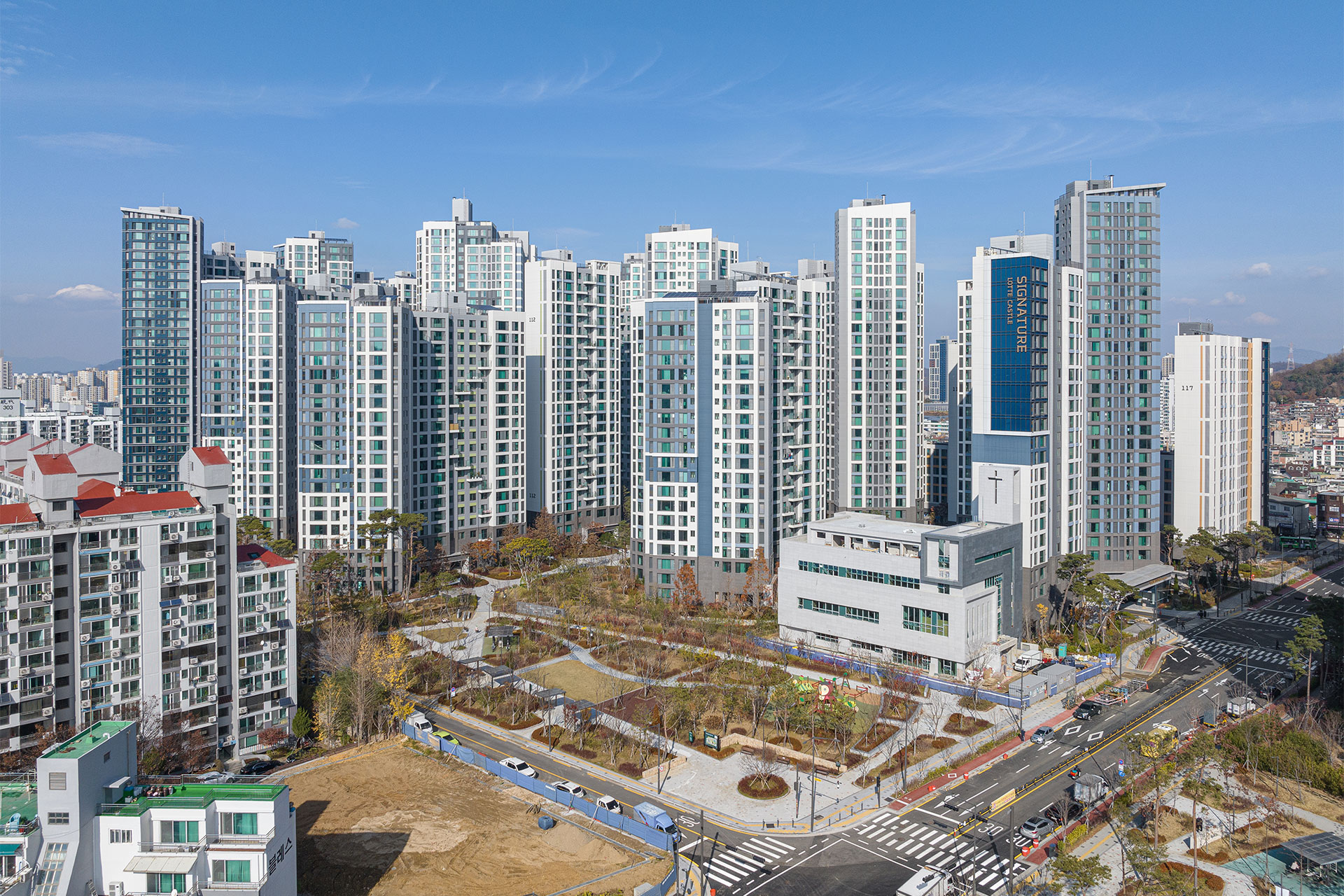

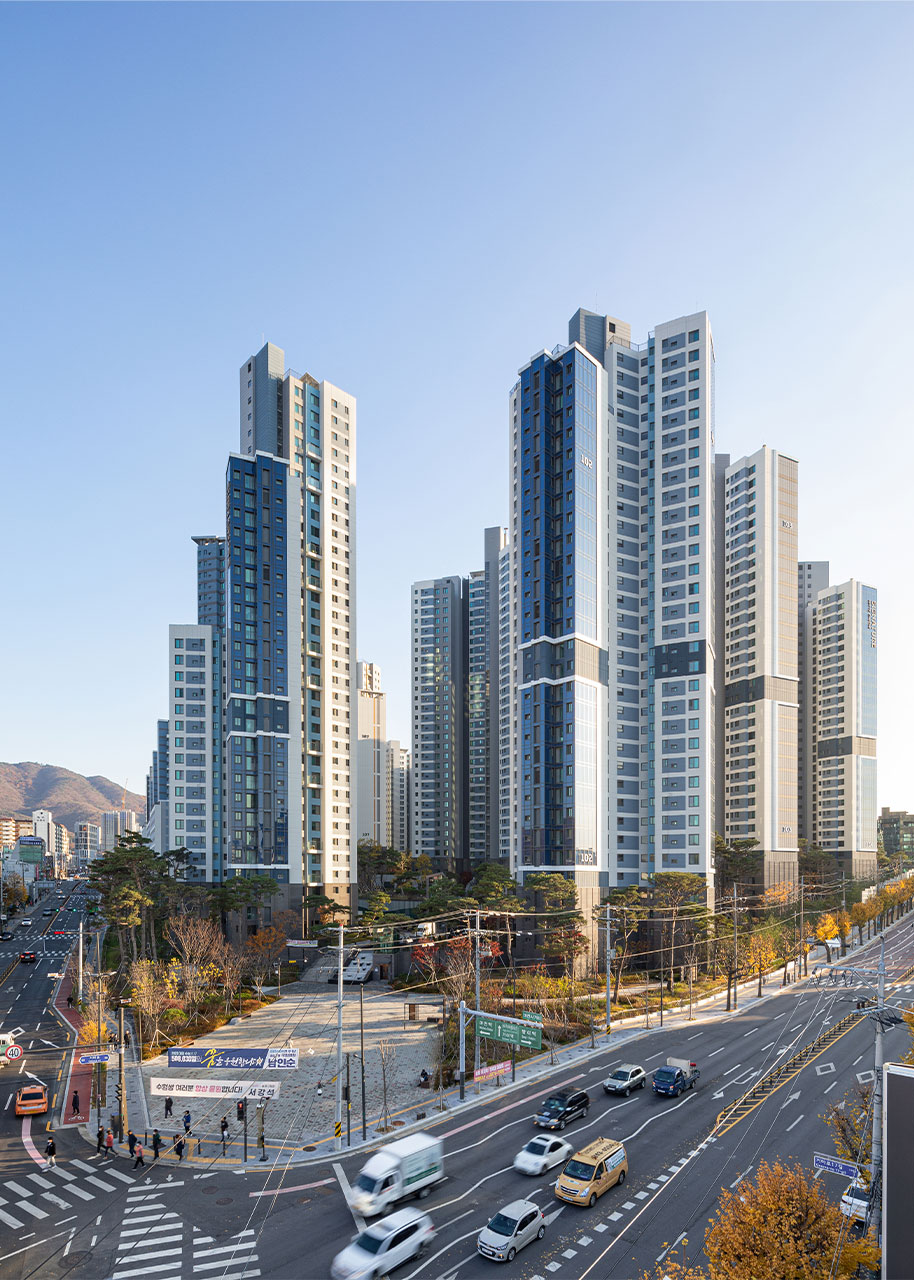
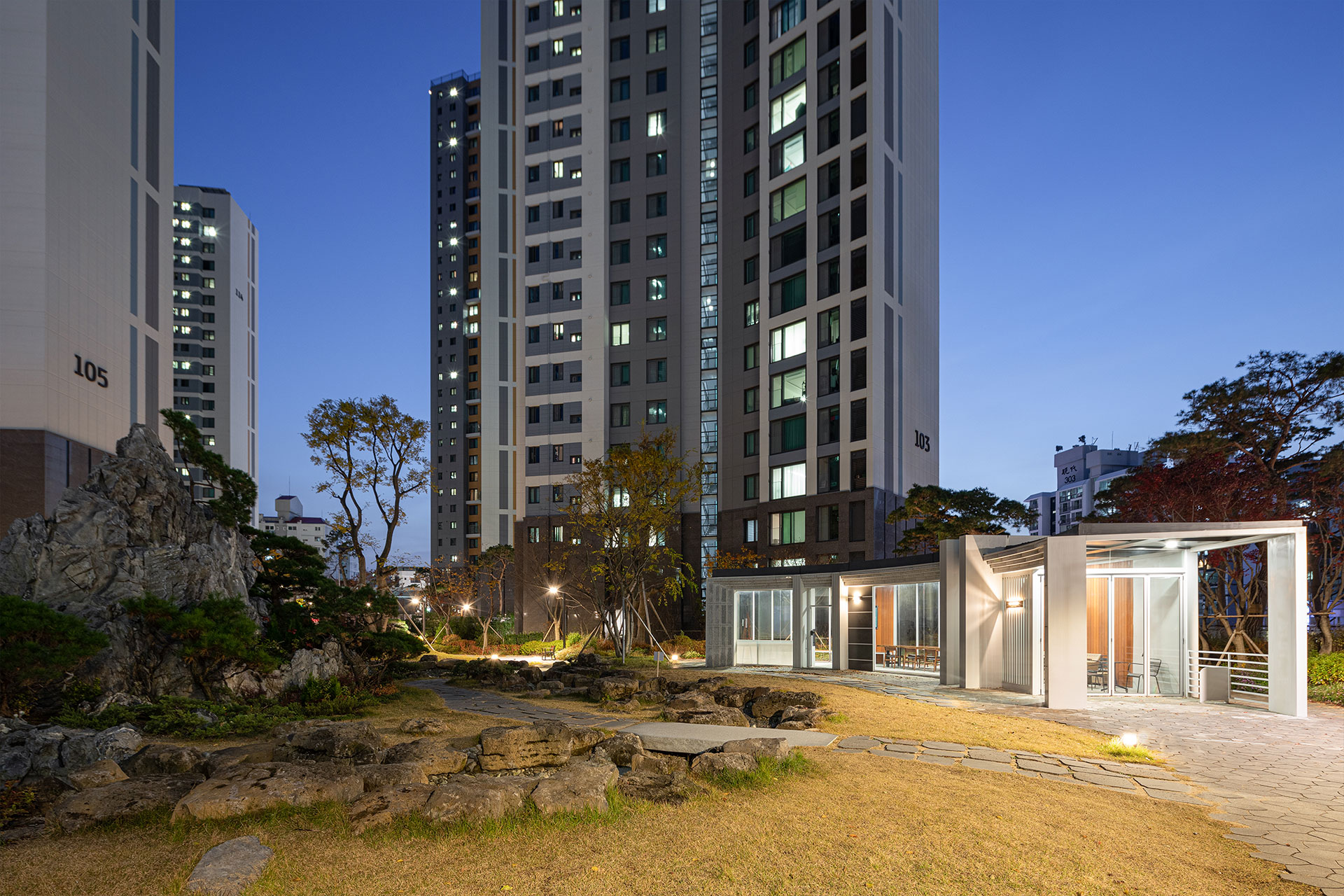
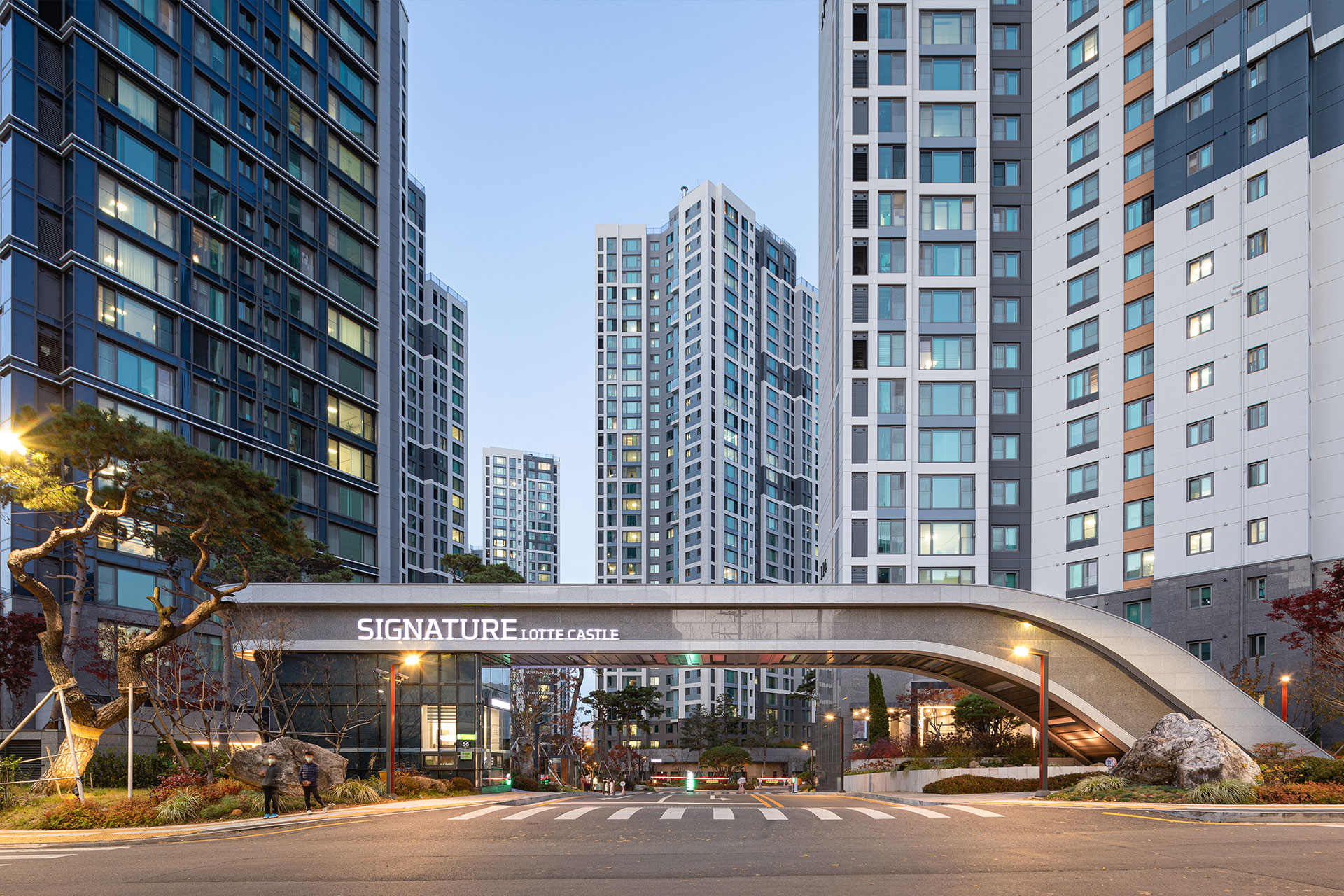
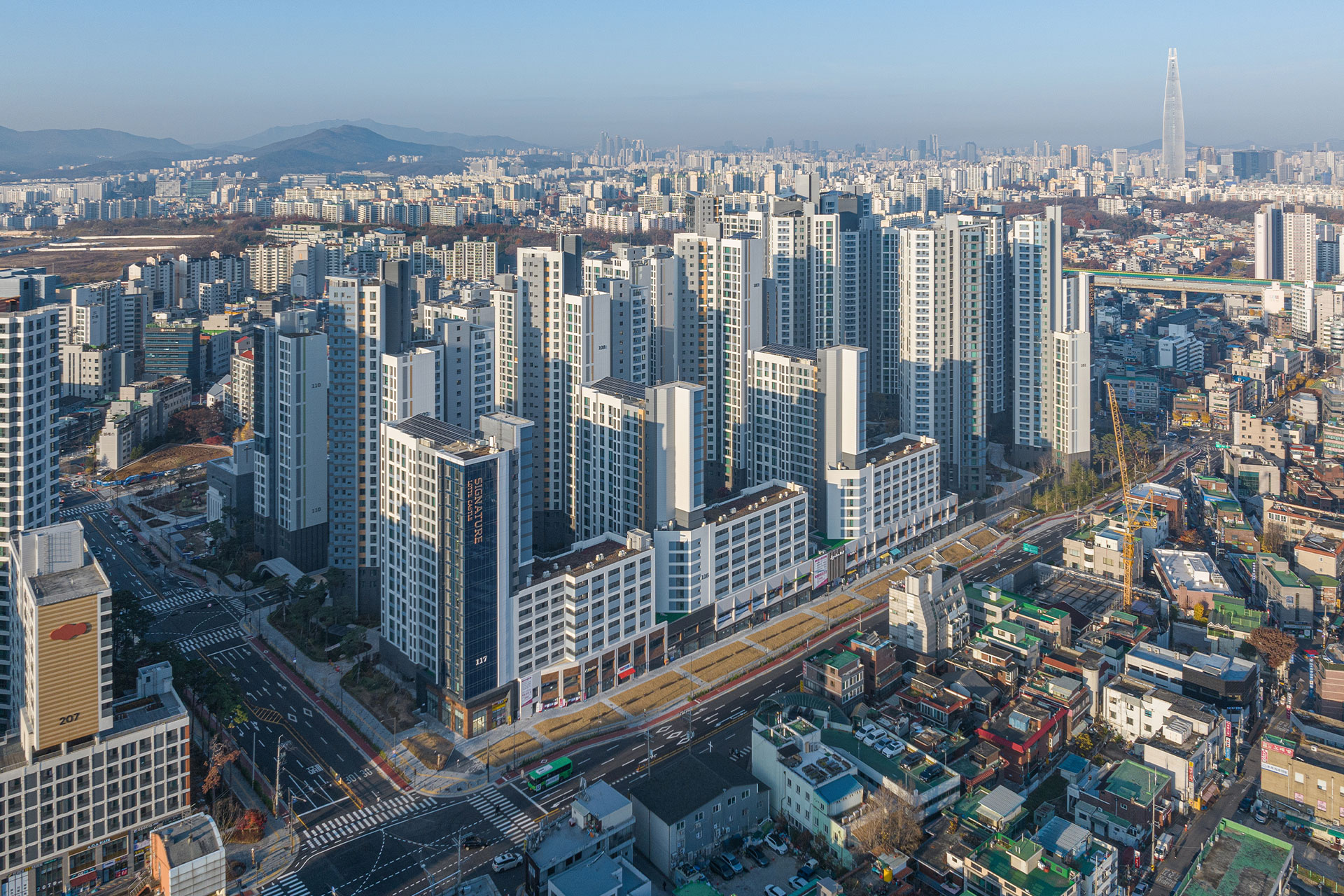
-
Status
Completed
-
Client
Geoyeo 2 Redevelopment Promotion Zone District 1 Housing Redevelopment Maintenance Project Association
-
Program
Residential
-
Design Year
2009
-
Completion Year
2022
-
Location
Songpa-gu, Seoul
-
Site area
68,337.00m2
-
Gross Floor Area
314,559.97m2
-
Number of Levels
B3, 33F
-
Design
-
Partner
Lotte Engineering & Construction Co., Ltd
The 1,927-unit Lotte Castle Signature Songpa (Geoye District 2-1 Housing Redevelopment Project) aimed not only to achieve the fundamental goals of housing redevelopment by improving and renovating the aging residential environment and infrastructure, but also to create an eco-friendly, human-centered residential complex. Considering the sloped site’s characteristics, natural terrain alterations were minimized, and residential buildings were arranged to adapt to the slope. The resulting deck spaces were used to plan ancillary facilities, and natural access to the complex was designed to encourage pedestrian-friendly circulation and a walkable neighborhood.
This long-term project was initiated in 2009 and completed in 2022. The key to project success was to balance the gradually increasing expectations and requirements for the residential environment over more than a decade. Ultimately, it became an opportunity to create a more comfortable and environmentally sustainable condominium complex.









